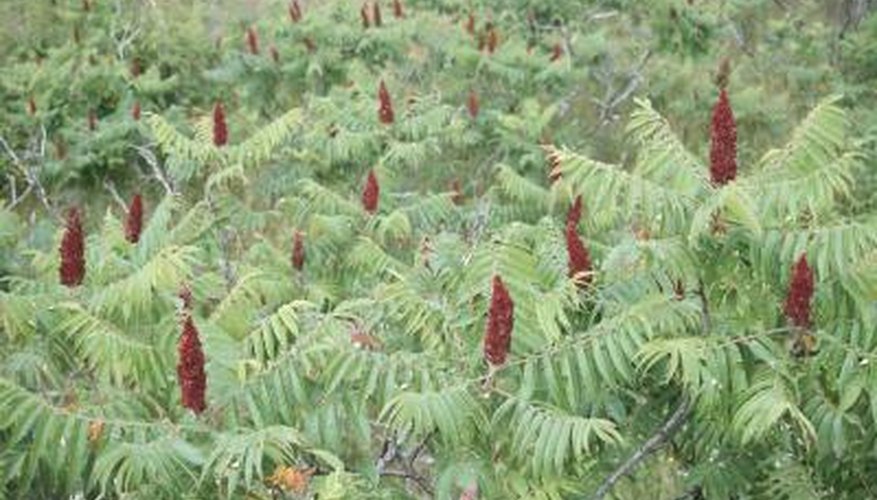The staghorn sumac is an ornamental shrub that may become a small tree with age. The tree produces alternate pinnate leaves in an attractive habit. Staghorn sumac trees grow in the eastern United States as a native species and can be grown in United States Department of Agriculture zones 4 through 8. The plant spreads through suckers and is often found in clusters. Sumac produces edible red berries in fall. The berries grow in clusters almost like cones and are a favourite food of wildlife. Propagation from seed is uncertain, but the common methods of rooting cuttings or removing suckers produce fast, healthy plants.
- The staghorn sumac is an ornamental shrub that may become a small tree with age.
Remove a sucker in late fall. You can cut out a sucker or you can remove a 4-inch terminal section of root or stem. You will need rooting hormone for the root or stem sections. Dig around the sucker to expose the rhizome connection to the parent plant. Sever it with a sharp soil knife and unearth the rest of the plant, including a 3- to 5-inch section of rhizome.
- Remove a sucker in late fall.
- Sever it with a sharp soil knife and unearth the rest of the plant, including a 3- to 5-inch section of rhizome.
Pot or plant the sucker in a nursery bed. To pot it, make a mixture of 2 parts potting soil, 1 part peat moss, and 1 part sand. Put the medium in a pot and evenly moisten it. Plant the sucker at the same depth it was growing in the ground.
Place the pot in an area that is at least 15.6 degrees Celsius until the sucker has rooted. Keep the soil evenly moist, and provide the plant with medium light. When the sucker has fully rooted, you can transplant it outdoors in spring.
- Place the pot in an area that is at least 15.6 degrees Celsius until the sucker has rooted.
Prepare a planting site by weeding a 3-foot-square area. Incorporate 3 to 5 inches of compost into the soil. Plant the staghorn sumac 1 inch higher than it was in the pot. This will allow water to run off the root ball. Cover the surface of the root ball with mulch.
Remove a 2- to 6-inch section of the root in late winter or early spring. The best time for the cutting is in the dormant season when it has stored carbohydrates to help spur root formation. Use a spade to unearth a healthy root section, and sever it at the terminal end with a sharp soil knife.
Store the root cutting for three weeks in a pot with moist sand or peat moss at 4.44 degrees Celsius. This is referred to as stratification, and it imitates the natural process that plants go through in the winter.
Weed a garden bed in spring, and work 5 inches of compost into the soil. Plant the root cuttings 2 to 3 inches apart. The terminal end of the root is 2 to 3 inches below the surface of the soil. If natural precipitation is not enough to keep the bed moist, water the equivalent of 1/2 inch per week, and then increase after two weeks to 1 inch.
- Remove a 2- to 6-inch section of the root in late winter or early spring.
- If natural precipitation is not enough to keep the bed moist, water the equivalent of 1/2 inch per week, and then increase after two weeks to 1 inch.
